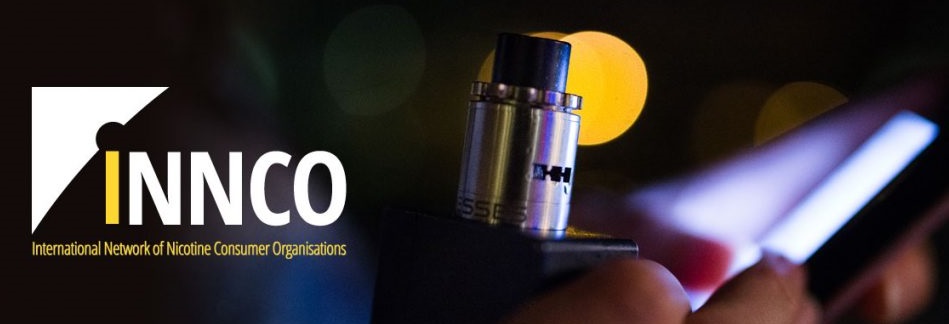Vapers Digest 30th June

Monday’s News at a glance:
Australia Ban Fuelling Crime ~ The WHO’s Attack on Reduced Harm ~ Sweden Shows What Happens When the Market is Allowed to Meet Demand ~ Swedish Match Asks the FDA for Permission to State the Bleeding Obvious ~ Vaping during pregnancy exposes women to fewer toxins than smoking, University of London study finds ~ GFN25 Celebrates Breakthrough Success In Tobacco Harm Reduction As Evidence Mounts Against WHO Opposition ~ Framing Harm Reduction as a Threat: A Critical Response to the Nicotine Pouch Perception Study in Australia ~ Calls for staff vaping rooms at work: Behavioural science expert says forcing vapers to go to same area as smokers outside is ‘totally barbaric’ ~ Patan High Court snuffs out govt’s e-cigarette ban attempt ~ Importing Panic | U.S. Influence Drives Global War On Nicotine
Dave Cross, Planet of the Vapes
Australia’s anti-smoking push fuels crime, fails to curb smoking, and forces ex-smokers into the hands of the criminal black market, says the Coalition of Asia Pacific Tobacco Harm Reduction Advocates (CAPHRA). It condemns Australia’s tobacco control strategy as a “public health failure”, prioritising ideology over evidence, fuelling a A$6.3 billion illicit tobacco market, and leaving adult smoking rates remaining stagnant.
David Zaruk, Firebreak
This is the third part of a series on tobacco harm reduction approaches using products like e-cigarettes and nicotine pouches that have helped millions of people quit smoking tobacco products and regain their health. The first part looked at how alternative nicotine products, as a harm reduction tool, was attacked by the health activists. The second part tried to understand why regulators were introducting restrictive policies on these smoking cessation strategies. The final part of the reduced harm rejection puzzle will look at the role the World Health Organization has played in spreading misinformation, conflating nicotine with tobacco and behaving in a completely non-scientific and irresponsible manner.

Two From The Daily Pouch
Sweden Shows What Happens When the Market is Allowed to Meet Demand
Joseph Hart
The media likes to paint nicotine pouches as some sort of alt-right symbol of frontier masculinity. Back on planet Earth, the harm reduction product has been crucial in helping Swedish women quit smoking.
In the world of smoking harm reduction, one of the more troubling sex disparities is the uneven uptake of snus between Swedish men and women. Data from 2024 suggests that men use snus at a rate of over 2:1 compared to women.
Swedish Match Asks the FDA for Permission to State the Bleeding Obvious
Richard Crosby
Swedish Match USA Inc., the company behind the popular nicotine pouch ZYN, has asked the U.S. Food and Drug Administration (FDA) for special permission to say their products are less risky than regular tobacco. The FDA unequivocally admitted this is true in January, but the question now is whether ZYN is allowed to state this truth.
FDA pouch approval
In January 2025, Swedish Match submitted a successful Premarket Tobacco Product Application (PMTA) for 20 ZYN products. The products were 10 different flavours of 3mg and 6mg strengths:
Vaping during pregnancy exposes women to fewer toxins than smoking, University of London study finds
Ali Anderson, Clearing The Air
Pregnant women who exclusively vaped had significantly lower levels of 10 toxic volatile organic compounds (VOCs) compared to those who smoked, with reductions between 44% and 97%.
Levels of most VOCs in exclusive vapers were similar to those found in women who had never used tobacco or nicotine products.
Dual users (those who smoked and either vaped or used nicotine replacement therapy) had higher toxin levels than exclusive vapers.
While vaping reduced exposure to many harmful chemicals, researchers cautioned that its safety during pregnancy remains uncertain and further studies on health outcomes are underway.
GFN25 Celebrates Breakthrough Success In Tobacco Harm Reduction As Evidence Mounts Against WHO Opposition
Coalition of Asia Pacific Tobacco Harm Reduction Advocates (CAPHRA), Scoop
Framing Harm Reduction as a Threat: A Critical Response to the Nicotine Pouch Perception Study in Australia
Alan Gor, Australia, Let’s Improve Vaping Education (A.L.I.V.E.)
A recently published study examining Australian attitudes toward nicotine pouches offers more insight into academic bias and moral panic than it does into actual public health progress. While the researchers claim to assess risk perceptions of nicotine pouches among young Australians, the undertone throughout the paper is one of subtle alarmism and predetermined conclusions, all of which undermine the potential of safer nicotine alternatives to combat smoking.
Let’s unpack the deeper issues with this study and why it reflects a broader problem in how public health institutions in Australia treat harm reduction.
Calls for staff vaping rooms at work: Behavioural science expert says forcing vapers to go to same area as smokers outside is ‘totally barbaric’
Chris Pollard, Cameron Roy, Daily Mail
Forcing people who vape to huddle outside in doorways with smokers is ‘totally barbaric’, behavioural science guru Rory Sutherland has claimed.
The vice chairman of advertising giant Ogilvy called for designated vaping rooms in offices so workers trying to quit cigarettes can stay away from temptation.
He also accused politicians and campaigners of a having ‘knee-jerk’ desire to ban vaping, which he described as his ‘salvation’ because it stopped him relapsing into cigarettes.
Patan High Court snuffs out govt’s e-cigarette ban attempt
Republica
In an attempt to ban electronic cigarettes, the National Health Education, Information and Communication Center under the Ministry of Health and Population had earlier issued a circular to the concerned government agencies to impose a ban on vape trading. Citing Sub-rule 3 of Rule 28 of the Tobacco Products Control and Regulation Directive, 2015—which prohibits the production, import, sale, distribution, consumption in public places and public transport, and promotion and advertisement of electronic cigarettes through the media—the government body had issued circulars seeking compliance with the law.
Importing Panic | U.S. Influence Drives Global War On Nicotine | RegWatch
Brent Stafford, Regwatch
With all the trade tensions and tariff spats, there’s one U.S. export Europe could do without: the moral panic over vaping.
Inexplicably, American-inspired fearmongering over safer nicotine products is reshaping EU policy and threatening tobacco harm reduction the world over.
In this episode of RegWatch, filmed on location at the 2025 Global Forum on Nicotine in Warsaw, we sit down with Bill Wirtz, senior policy analyst at the Consumer Choice Center and creator of The Fun Police podcast. Wirtz explains how Bloomberg-funded NGOs, WHO-orchestrated pressure campaigns, and “Save the Children” messaging are fueling a crackdown on vaping in Europe and jeopardizing the rights of millions who’ve already quit smoking.
A look back at how things have moved on or otherwise…
Send back the clowns
Christopher Snowdon
Don’t ever try to tell me that modern ‘public health’ is evidence-based.
From the Scottish Sun…
Scottish ministers are being urged to copy Australia and make e-cigarettes prescription only in a bid to tackle a new “epidemic of vaping” among young people.
Is vaping nicotine the answer ….
To quitting smoking? – John Rule
This article starts on a hopeful note, however, even when we consider that only 75% of this subsample report that they are daily smokers, this still places people with HIV at a considerably higher rate than everyone else (an estimated 10.7% of the Australian population over 18 are daily smokers).
Visit Nicotine Science & Policy for more News from around the World







